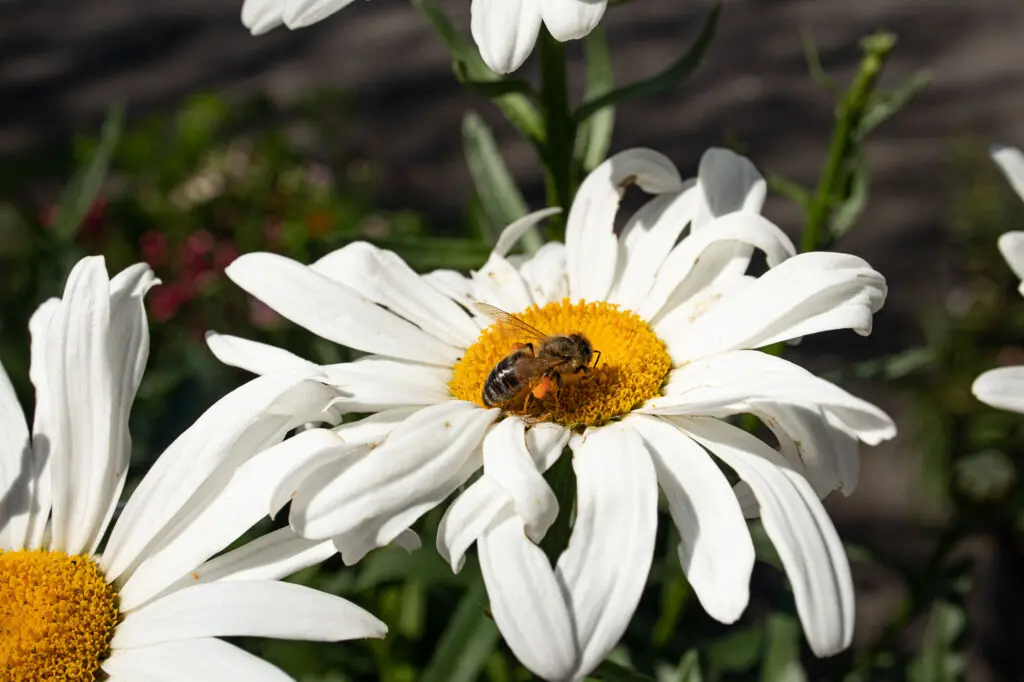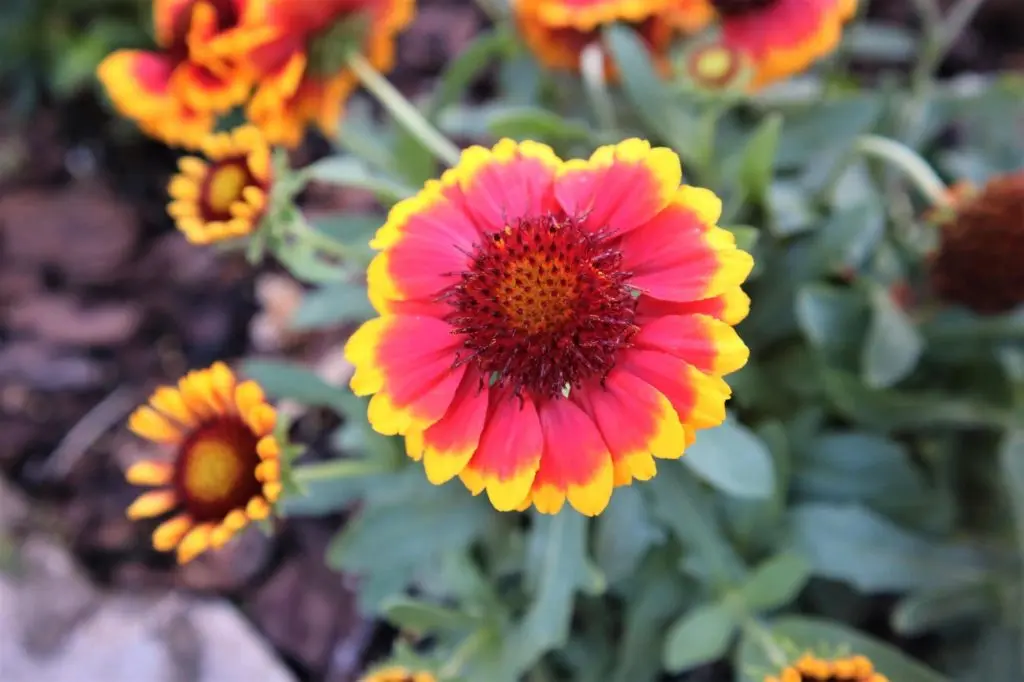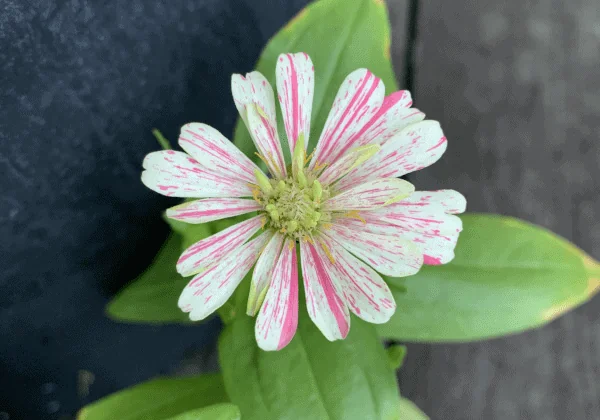By Amanda Rose Newton
Daisies are some of the most recognizable flowers in the world, known for their signature ray-like petals and central disk.

But did you know that daisies belong to the Asteraceae family, the largest family of flowering plants? This massive plant family includes over 32,000 species, ranging from sunflowers and zinnias to coneflowers and dandelions.
What sets daisies apart is their composite flower structure—what looks like a single bloom is actually made up of two types of flowers:
Ray Flowers: The colorful “petals” surrounding the center.
Disk Flowers: Tiny, tubular florets that make up the center (or “eye”) of the flower, often packed with nectar and pollen.
This structure is why daisies are such pollinator favorites—they provide multiple sources of nectar and pollen in a single bloom! The name “daisy” itself is derived from “day’s eye” because many species open in the morning and close at night.
In Central Florida, not all traditional daisies thrive due to the intense heat and humidity, but there are plenty of daisy-like plants that will flourish year-round.
This guide will help you find the best true daisies and their look-alikes for a Florida-friendly garden!
Daisies That Thrive in Central Florida
Oxeye Daisy (Leucanthemum vulgare)
Classic white petals with a yellow center.
Can tolerate Florida’s sandy soils but may be invasive in some areas.
Prefers well-drained soil and full sun.
Learn more about Seaside Oxeye Daisy
Shasta Daisy (Leucanthemum × superbum)
A popular hybrid with large, bright white blooms.
Requires well-draining soil to prevent root rot.
Prefers morning sun and some afternoon shade in hotter months.
African Daisy (Osteospermum spp.)
Vibrant color variations, including purple, pink, orange, and white.
Prefers cooler months in Florida but may struggle in peak summer heat.
Best grown in containers or as a seasonal bloomer.
Seaside Daisy (Erigeron glaucus)
Native to coastal regions and tolerates Florida’s sandy, salty conditions.
Features lavender-to-purple petals with yellow centers.
Attracts pollinators and grows well in borders and containers.
Dune Daisy (Arctotheca populifolia)
A tough, ground-cover daisy that thrives in sandy coastal conditions.
Small yellow blooms with silver-green foliage.
Drought and salt-tolerant, making it ideal for Florida landscapes.
Daisy Look-Alikes for Central Florida
If you love the daisy look but need more heat-tolerant options, consider these similar flowers:
Coreopsis (Coreopsis spp.)
Florida’s state wildflower, featuring yellow or red-tipped petals.

Highly adaptable and drought-resistant.
Blooms nearly year-round in Central Florida.
Blanket Flower (Gaillardia pulchella)
Heat-loving, drought-resistant, and attracts pollinators.

Red, orange, and yellow petals with a deep maroon center.
Self-seeding and spreads easily.
Mexican Sunflower (Tithonia rotundifolia)
Large, fiery orange flowers resembling oversized daisies.
Thrives in Florida’s heat and attracts butterflies.
Requires full sun and well-drained soil.
Zinnias (Zinnia spp.)
Bright, bold, and available in a wide range of colors.

Perfect for cut flower gardens and container planting.
Grows quickly and blooms continuously in warm weather.
Echinacea (Echinacea purpurea)
Coneflowers resemble daisies but with raised, spiky centers.
Heat-tolerant and beloved by pollinators.
Requires well-drained soil and full sun.
Best Spots for Growing Daisies in Your Florida Garden
Daisies and their look-alikes love sunlight, but placement is key to ensuring they flourish in Central Florida’s unique conditions. Consider these ideal locations:
Full Sun Borders: Most daisies thrive in at least 6 hours of direct sunlight daily. Plant along garden edges or pathways for a natural, wildflower-inspired look.
Pollinator Gardens: Bees, butterflies, and other pollinators love daisies. Pair them with other nectar-rich plants for an eco-friendly, biodiverse garden.
Container Gardens: If space or soil conditions are challenging, daisies do well in pots and raised beds with proper drainage.
Coastal or Sandy Areas: Certain species, like Seaside Daisy and Blanket Flower, tolerate salty, sandy soils, making them ideal for coastal gardens.
Wildflower Meadows: Combine Coreopsis, Gaillardia, and Dune Daisies for a low-maintenance, sprawling wildflower effect.
Growing Tips for Healthy Daisies
To keep your daisies blooming beautifully, follow these Florida-friendly growing tips:
Choose Well-Draining Soil: Daisies hate soggy roots! Amend Florida’s sandy soil with compost to retain some moisture while allowing drainage.
Provide Full Sun: Most daisies need 6+ hours of sunlight daily. Afternoon shade may help in the peak summer heat.
Water Wisely: While some varieties are drought-tolerant, water regularly during establishment. Once mature, deep watering once or twice a week is sufficient.
Deadhead Regularly: Removing spent blooms encourages continuous flowering and prevents self-seeding of invasive varieties.
Mulch for Moisture Retention: A light layer of organic mulch keeps the soil cool, retains moisture, and suppresses weeds.
Fertilize Sparingly: Daisies don’t need heavy feeding. A light application of balanced fertilizer (10-10-10) in early spring promotes healthy growth.
Encourage Pollinators: Plant alongside butterfly-friendly flowers like milkweed, salvia, or lantana to attract beneficial insects.
Daisies and their look-alikes bring charm, color, and pollinator appeal to Central Florida gardens. Whether you choose classic Shasta Daisies, the native Coreopsis, or heat-loving Blanket Flowers, there’s a perfect daisy-like bloom for every Florida gardener. With the right placement and care, you’ll enjoy a thriving, low-maintenance garden full of cheerful, daisy-like flowers all year long!


